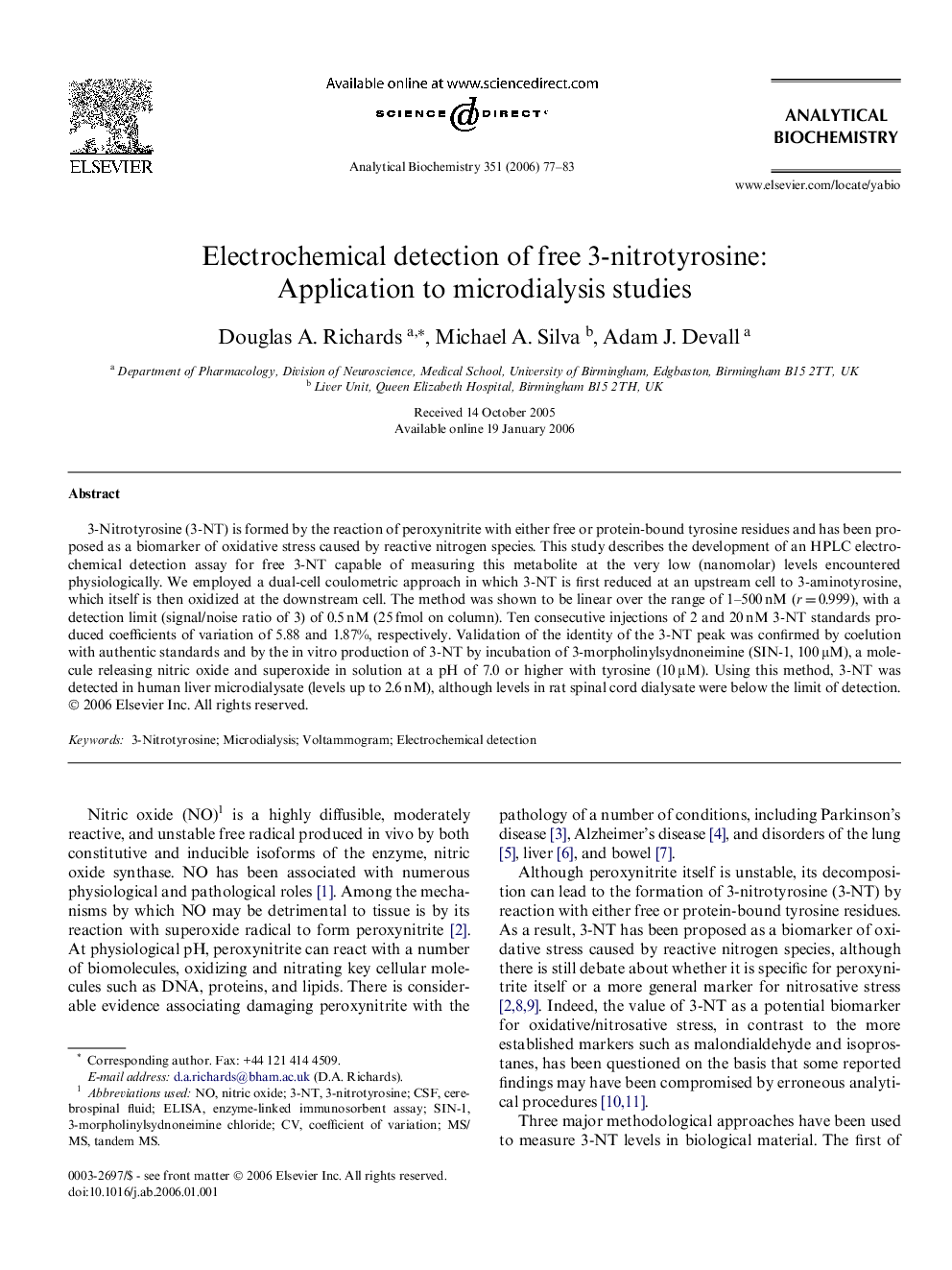| Article ID | Journal | Published Year | Pages | File Type |
|---|---|---|---|---|
| 1176846 | Analytical Biochemistry | 2006 | 7 Pages |
3-Nitrotyrosine (3-NT) is formed by the reaction of peroxynitrite with either free or protein-bound tyrosine residues and has been proposed as a biomarker of oxidative stress caused by reactive nitrogen species. This study describes the development of an HPLC electrochemical detection assay for free 3-NT capable of measuring this metabolite at the very low (nanomolar) levels encountered physiologically. We employed a dual-cell coulometric approach in which 3-NT is first reduced at an upstream cell to 3-aminotyrosine, which itself is then oxidized at the downstream cell. The method was shown to be linear over the range of 1–500 nM (r = 0.999), with a detection limit (signal/noise ratio of 3) of 0.5 nM (25 fmol on column). Ten consecutive injections of 2 and 20 nM 3-NT standards produced coefficients of variation of 5.88 and 1.87%, respectively. Validation of the identity of the 3-NT peak was confirmed by coelution with authentic standards and by the in vitro production of 3-NT by incubation of 3-morpholinylsydnoneimine (SIN-1, 100 μM), a molecule releasing nitric oxide and superoxide in solution at a pH of 7.0 or higher with tyrosine (10 μM). Using this method, 3-NT was detected in human liver microdialysate (levels up to 2.6 nM), although levels in rat spinal cord dialysate were below the limit of detection.
